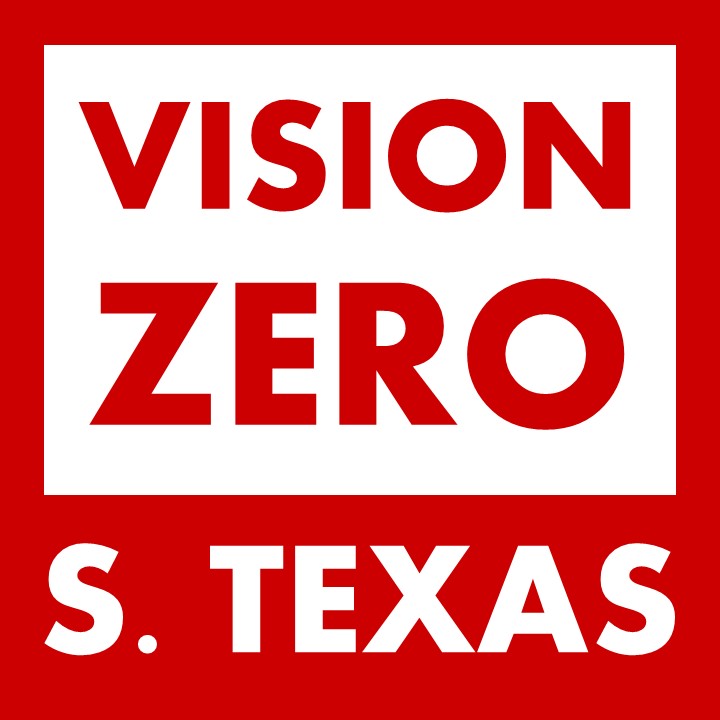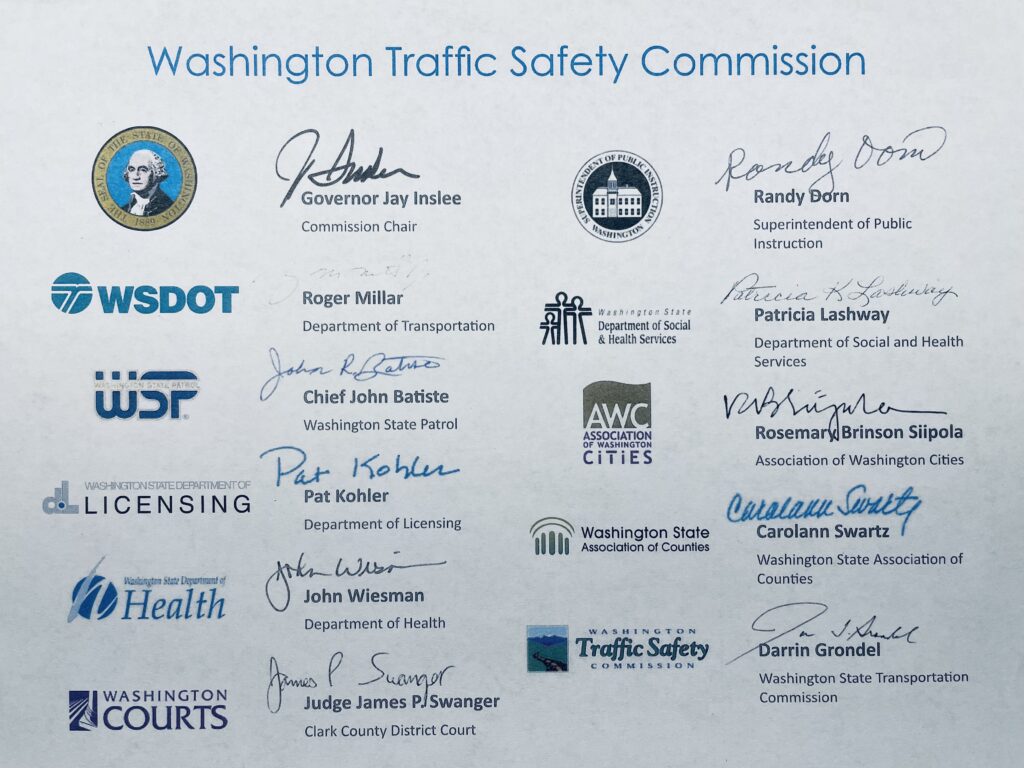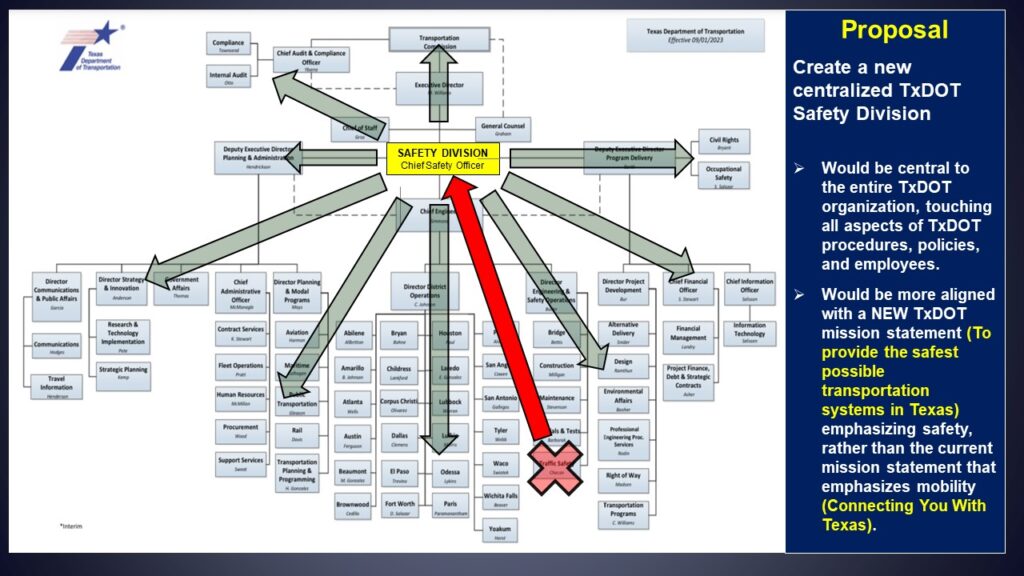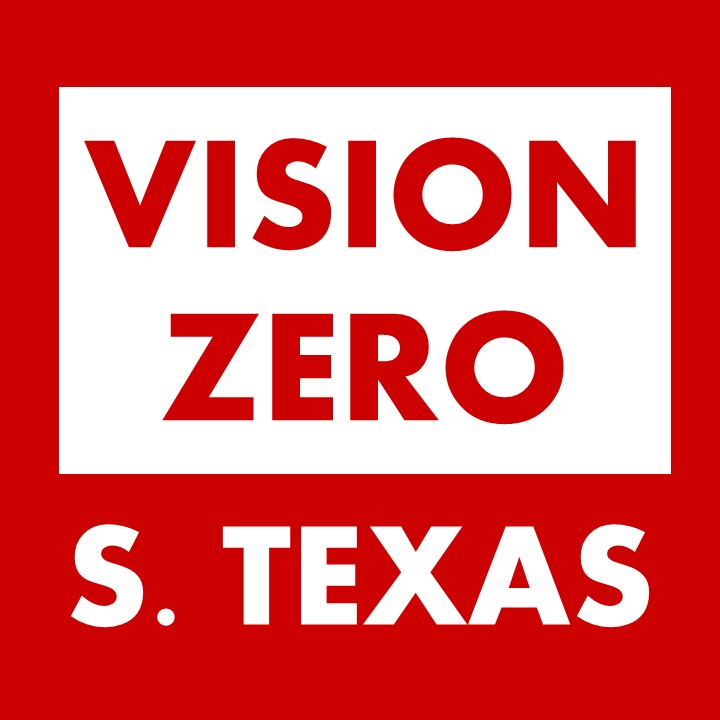The Solution: Legislative Agenda & Recommendations

A. Summary of Legislative Agenda and Recommendations from Vision Zero South Texas (Scroll down to item D for detailed explanation of agenda items)
- Texas Legislature (TxLege) to Create and Fund a Texas Traffic Safety Commission
- Texas Department of Transportation (TxDOT) to Create New TxDOT Safety Division
- TxDOT to Remove the Traffic Safety Office and Personnel from the TxDOT Operations Division and Move to a New (Autonomous) Safety Division
- TxLege to Pass a Law for Statewide Hands-Free Driving
- TxLege to Pass a DUI Law to Lower the Blood Alcohol Concentration (BAC) limit from 0.08% to 0.05% (NTSB and NHTSA Recommended)
- TxLege to Pass a Law for Speed Safety Cameras for School Kids
- TxLege to Pass a Law Entitled “Police Stop Safe Stop” (Allow Drivers, During a Routine Police Stop, to Drive and Park at the Nearest Safe Area and Not on the Shoulder of a 55-85MPH High-Speed Roadway)
- TxLege to Pass a Law Repealing Previously Legislated 70-75MPH Speed Limits for Undivided Roadways and Banning Future Speed Limits Greater than 65MPH for Undivided Roadways
- TxDOT to Ban its Agency from Setting Speed Limits Greater than 65MPH for Undivided Roadways
- TxLege to Pass a Law Banning TxDOT from Using the 85th Percentile Rule for Setting Speed Limits
- TxDOT to Ban its Agency from Using the 85th Percentile Rule for Setting Speed Limits
- TxDOT to Declutter Clear Zones, Adhere to and Update AASHTO Clear Zone Distances, Make Distances Exponential in Relation to Speed Limits, and Eliminate Use of “Traffic Volume” in Clear Zone Distances
- AASHTO to Make Clear Zone Distance a Mandatory Design Criteria, Make Clear Zone Distances Exponential in Relation to Speed Limits, and Eliminate Use of “Traffic Volume” or “Average Daily Traffic” in Clear Zone Distances
- TxLege and TxDOT to Use Automated Speed Enforcement Devices (Cameras)
- TxLege and TxDOT to Promote Vision Zero Principles
- TxLege and TxDOT to Set Road Death Reduction Goals
B. Summary of Legislative Agenda from Vision Zero Texas (Source: VisionZeroTexas.org)

- Safe Neighborhood Streets. Allow Texas cities to use 20 or 25 mph speed limits on two-lane undivided residential streets to redesign neighborhood streets to be safe for kids, seniors, and everyone in between, walking, biking, using a personal mobility device, and riding in cars and trucks.
- Consistent, Statewide Hands-Free (SB41). It shouldn’t be legal to drive a vehicle in Texas while distracted using a cell phone.
- Crash Not Accident (HB2190). Accident implies that no one is to blame. This bill would change every instance of the term “accident” when referring to a traffic crash in the Texas transportation code to “crash” to establish a culture of responsibility.
- Speed Safety Cameras for School Kids. Allow children to be protected from cars and trucks being driven a dangerous speeds in a school zone. Fair, transparent automated fines for dangerously speeding drivers around schools is a well documented proven safety measure that will reduce severe crashes and save lives.
- Responsibility for Distracted Deaths. If one’s personal decision to drive distracted leads to a death or debilitating injury, the State of Texas should hold that person accountable for that decision.
- Responsibility for Speeding Deaths. If one’s personal decision to drive dangerously fast leads to a death or debilitating injury, the State of Texas should hold that person accountable for that decision.
- Outlaw Parking Requirements for Bars. Cities should not be allowed to require bars to subsidize the choice of driving home drunk from a bar.
- Decriminalize Walking (HB396). The great advice to walk on the left side of streets with no sidewalks should not be enforced by police as part of the Texas Transportation Code.
- Variable Speed Limits. Allow TxDOT Districts discretion to provide higher or lower speed limits when it is safest for a particular corridor to operate at certain speeds, and to ensure safety in work zones or during congestion.
C. Summary of Texas-specific Recommendations from the National Transportation Safety Board (NTSB) [Source: ntsb.gov]
- Reduce DUI Blood Alcohol Content limits from 0.08 to 0.05% BAC
- Use Automated Traffic Devices for Vehicle Speed Enforcement (Speed Cameras and Red Light Cameras)
- H-18-060 To the State of Texas; Conduct an executive-level review of your impaired driving program and implement data-driven strategies that result in a downward trend in the number of fatalities, injuries, and crashes involving alcohol – and other drug – impaired drivers. (11/19/2018).
D. Detailed Explanation of Legislative Agenda and Recommendations from Vision Zero South Texas (from item A, listed above)
A.1. TxLege to Create Texas Traffic Safety Commission. Recommend the Texas Legislature create a statewide commission, with annual funding, that has the sole purpose and resources to reduce Texas traffic fatalities and serious injuries year-over-year. With creation of this commission and its distinct job description, responsibility, and performance measures, the Texas Legislature and other State organizations will begin to be held accountable for public safety on Texas roadways. An example of this type of commission is the Washington Traffic Safety Commission (for information, click on link), which is chaired by Washington’s Governor Jay Inslee and is made up of ten Commissioners representing the four E’s of traffic safety (Education, Enforcement, Engineering, and Emergency Medical Services).

A.2. TxDOT to Create New TxDOT Safety Division
A.3. TxDOT to Remove the Traffic Safety Office and Personnel from the TxDOT Operations Division and Move to New Safety Division
Recommend TxDOT create and staff a new Safety Division. The Chief Safety Officer will have an equal seat-at-the-table as the other TxDOT division chiefs. The TxDOT Chief Safety Officer will be held responsible, and have a job description, stated mission, and performance measures to effectively reduce traffic fatalities and serious injuries year-over-year. TxDOT will provide annual funding to the Safety Division to ensure success in its mission to effectively reduce traffic fatalities and serious injuries year-over-year.

A.4. TxLege to Pass a Law for Statewide Hands-Free Driving. It shouldn’t be legal to drive a vehicle in Texas while distracted using a cell phone or holding other objects while driving. A Hands-Free bill law will provide a consistent, statewide standard that it is not acceptable to drive a vehicle in Texas with your phone in your hands and the bill will also eliminate loopholes to current law that allows typing music or navigation data into a handheld device while driving.
A.5. TxLege to Pass a DUI Law to Lower the Blood Alcohol Concentration (BAC) limit from 0.08% to 0.05% (NTSB and NHTSA Recommended). The state of Utah passed this law a couple of years ago and studies have proved the law to save lives. This law will allow Texas to become a little closer to having a “zero tolerance” policy for drink and drive vehicle operators. This law will prevent “buzzed” or “a little drunk” driving, and like Utah, it will save lives.
A.6. TxLege to Pass a Law for Speed Safety Cameras for School Kids. Allow children to be protected from cars and trucks being driven a dangerous speeds in a school zone. Fair, transparent automated fines for dangerously speeding drivers around schools is a well documented proven safety measure that will reduce severe crashes and save lives
A.7. TxLege to Pass a Law Entitled “Police Stop Safe Stop.” This law will allow drivers, during a routine police stop, to not stop immediately, but to continue to drive and then park at the nearest safe area. Drivers will no longer be required to park on the shoulder of 55-85MPH high-speed roadways that endangers themselves and police officers. Let’s PROTECT THE BLUE and allow police officers the peace of mind that they will return home to their families at the end of the day instead of finding themselves in the hospital, or worse, dead, from drivers crashing their high-speed vehicles into stopped vehicles and humans on the shoulder of a highway during a routine police traffic stop. This type of crash has happened way too often and it’s time to prevent these deaths and serious injuries.
A.8. TxLege to Pass a Law Repealing Previously Legislated 70-75MPH Speed Limits for Undivided Roadways and Banning Future Speed Limits Greater than 65MPH for Undivided Roadways. Why is 70 and 75 mph speed limits on undivided roadways so deadly?
A. In 2011, the Texas Legislature passed a law allowing TxDOT to set speed limits greater than 65 mph on undivided roadways in Texas, including rural Farm-to-Market and county roadways. These rural roadways were already dangerous because of the many at-grade intersections, as they were the scene of many deadly and serious injury T-Bone crashes. Undivided roadways are also susceptible to human error leading to centerline-crossing head-on crashes. These T-Bone and head-on crashes become deadly because of the blunt force trauma inflicted on the human body and the primary determinant of deadly blunt force trauma is vehicle speed at crash impact. When TxDOT, with the approval of the TxLege in 2011, raised the speed limit to 70 or 75 mph on these rural undivided roadways, they made these intersection T-Bone crashes and centerline-crossing head-on crashes exponentially more deadly because a vehicle’s speed at crash impact is exponential to its kinetic energy which determines the severity of blunt force trauma. For example, raising the speed limit from 65 mph to 75 mph (a common change on Texas roadways after the 2011 legislation) increases a vehicle’s kinetic energy by 33%, and in general, creating 33% more deadly blunt force trauma on the human body in crashes. This increase in speed limits in 2011 probably was the primary reason the Texas annual death toll in traffic crashes jumped a whopping 18% from the previous year. Prior to the COVID pandemic, Texas had only two years where the annual death toll in year-over-year traffic deaths increased by double-digit percentage points, both years being after a TxLege/TxDOT speed limit increase (11% in 1996 and 18% in 2011).
B. Peer-reviewed studies have determined that vehicle speed is the primary determinant of crash severity and crash survivability. In 2011, when TxDOT and TxLege raised speed limits, they primarily relied on constituent desires and data using the 85th Percentile Rule (see below). Unfortunately, the raising of speed limits on undivided roadways was not based on studies determining the effectiveness of vehicle seatbelts and airbags at these new 70-75 mph speeds in a crash. In a three-year average, 56% of annual Texas roadway death victims were wearing seatbelts during their fatal crash. Sadly, it is most likely that TxDOT and TxLege did not account for the increased death toll of their increased speed limits in 2011 resulting from the degraded effectiveness of seatbelts and airbags to save lives in the increased blunt force trauma crashes. Due to increased/faster speed limits and the affects of the laws-of-physics on the human body, crashes in Texas have become unsurvivable to the human body as we have reached the CROSSOVER POINT in vehicle speeds, from safe traffic flow to unsurvivable crashes.
C. When determining speed limits, TxDOT uses the 85th Percentile Rule as the primary formula for setting speed limits. This rule primarily accounts for the current speed of the drivers on the roadway to determine what speed 85% of the drivers are driving at or slower and the speed that 15% of the drivers are driving at or faster. For example, if 15% of the drivers on a roadway are driving 75 mph or greater, but the current speed limit is 65 mph, TxDOT would be inclined, or required by policy, to increase the speed limit to within 5 mph of the determined 85th Percentile speed, so within 5 mph of 75 mph, making the new speed limit no 70 mph. So one can see that the 85th Percentile Rule allows our most speedy, mostly lawbreaking speeding drivers dictate the speed limit for the remaining, mostly law-abiding 85% of the drivers.
Sorry, this page is incomplete & under construction.

